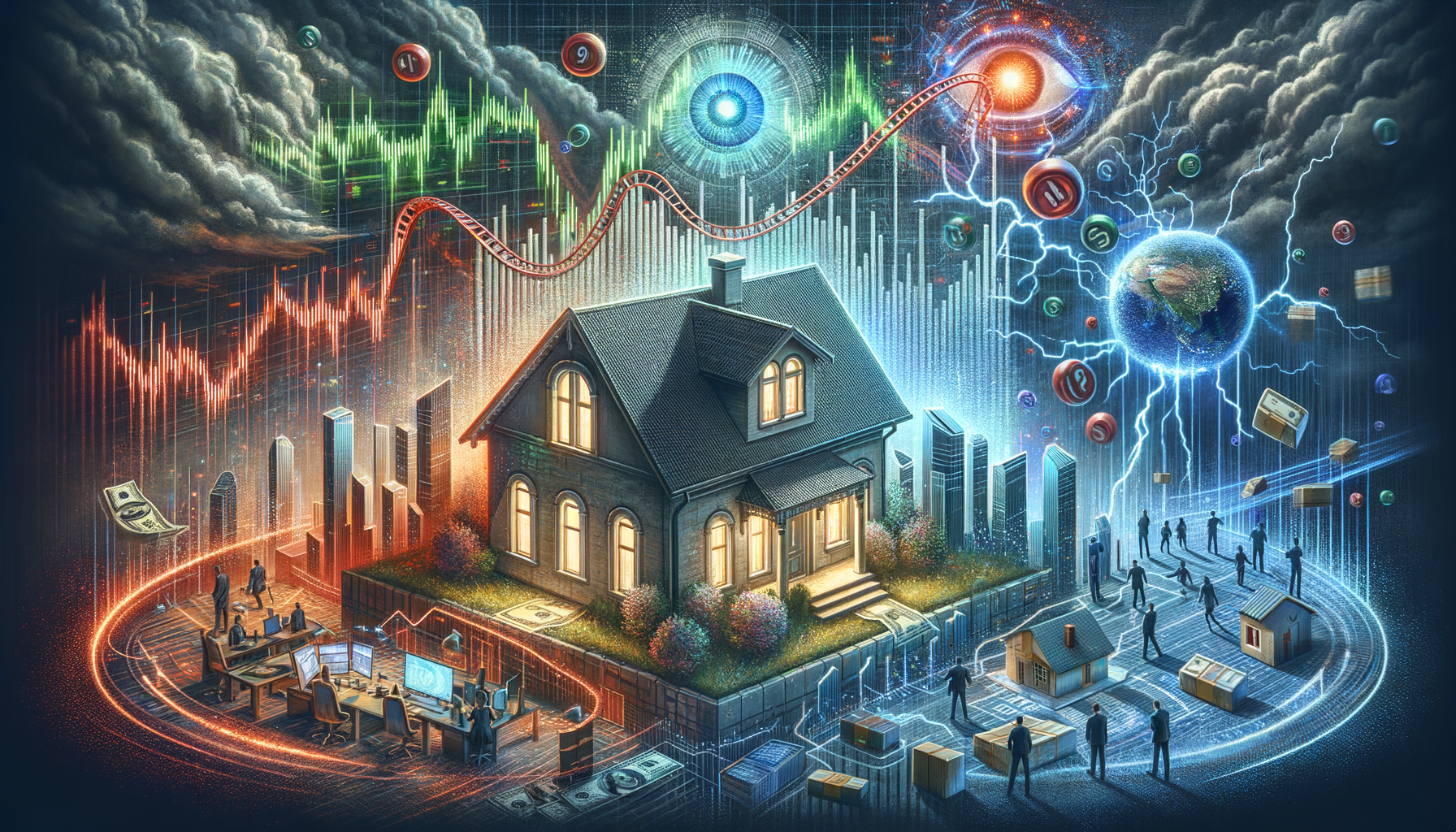“Exploring the Latest Shifts in Mortgage Rates: A Comprehensive Review”
Mortgage rates have always played a pivotal role in determining whether prospective homeowners take the leap to purchase property. Presently, there’s an increase in these rates across the spectrum; hence, it’s crucial to keep abreast of these changes, whether you are an existing home-owner or you’re thinking of buying a house.
To understand this situation better, consider that during the trading session on Tuesday, there was a significant downward adjustment in mortgage rates. Still, on Wednesday, the rates increased, surprising many since this rise happened faster than usual. The swift changes in rates are primarily due to financial markets grappling with unfolding events and projections. It’s a clear illustration of the intricate dance between pending home sales, bond markets, and mortgage rates.
Analyzing the market trends, experts in the field suggest that the dynamics of the mortgage market are increasingly influenced by the bond market. Specifically, the 10-year Treasury yield is the key driver of 30-year fixed mortgage rates. In simple terms, as the yield on 10-year Treasuries increases, so does the cost of borrowing for home buyers, translating to higher mortgage rates. It’s usual for these two to move in tandem since most mortgages get repackaged into bonds, and those bonds then compete with Treasuries for investors.
If we break down the numbers from the last week, the 10-year Treasury yield started at 2.08% on Tuesday morning and closed at around 2.11%, which was a considerable increase. However, by the end of Wednesday, the yield had spiked to 2.19% because traders and investors were trying to account for Ukraine-related headlines and the Federal Reserve’s policy outlook. This led to mortgage rates experiencing one of their most abrupt increases in months.
To provide some context for these developments, the Federal Reserve had signaled that it planned to raise interest rates, causing the bond market to adjust to a new framework. In fact, this is one place where the domino effect is most evident. When the Fed raises rates, those increases filter down to the interest rates offered on mortgages, car loans, and other types of debt. This is because these creditors need to maintain a profit margin, and higher rates from the central bank make lending more expensive.
Now, paralleling the mortgage markets is the data on pending home sales. It’s worthwhile to understand that the real estate sector is strongly influenced by interest rates. When interest rates rise, it typically depresses home sales due to increased borrowing costs, making houses less affordable. Prospective buyers may face budget constraints or choose to delay purchasing until rates go down. In the latest available data, the National Association of Realtors (NAR) reported a decrease in the Pending Home Sales Index (PHSI) by 3.8% to 109.5 in January.
Despite the decline in the PHSI, the NAR’s chief economist, Lawrence Yun, maintains an optimistic outlook. He underscores that the year started strong in home sales, and upcoming monthly variations may reveal different patterns. For instance, the demand for homes remains steady, and there is the hopeful anticipation that the supply of homes for sale will increase. Such instances can boost sales, despite higher interest rates.
Furthermore, the labor market’s strength, coupled with a resilient economy projected to grow, adds a silver lining to the cloud of rising mortgage rates. Recently released economic indicators paint a positive picture of the economy, with job openings exceeding the number of unemployed workers by a significant margin. Coupled with relatively low inflation, these factors offer hope that the potential negative impact of higher mortgage rates can be mitigated.
Still, it’s essential to recognize that there’s considerable uncertainty in predicting future mortgage rates. This uncertainty comes from geopolitical tensions, particularly the conflict in Ukraine, which has roiled global financial markets. Much of the worry isn’t just about the war itself, but the possibility of it sparking inflation and thereby leading to even higher interest rates.
Despite these uncertainties, one fact is acknowledged universally: now more than ever, the market warrants vigilance. For those considering buying a home, waiting for rates to lower may seem appealing. But they have to balance this against the possibilities of rates climbing higher or home prices rising faster than anticipated.
And for existing homeowners, refinancing could still be an option, albeit less advantageous than when rates were at historic lows. At the end of the day, the choice to refinance or to invest in a new home largely depends on individual circumstances.
To wrap up, the dynamics of the housing market are experiencing some flux with mortgage rates on an upward trajectory. The relationship between the Federal Reserve’s decisions, the bond market, and mortgage rates complicates the picture, as do the geopolitical tensions on the horizon.
Yet, amid this complexity, the robust state of the economy, strong labor market, and the hope for an increasing supply of homes for sale provide counters to the dampening effect of rising mortgage rates. As we navigate these changes, it pays to keep a keen eye on the market, economics, and global developments. We’re truly operating in a rapidly fluid environment where staying informed is crucial. In the end, regardless of the market state, the decision to buy or refinance should be a well-thought-out move, taking into account your unique financial situation, preferences, and long-term goals.

